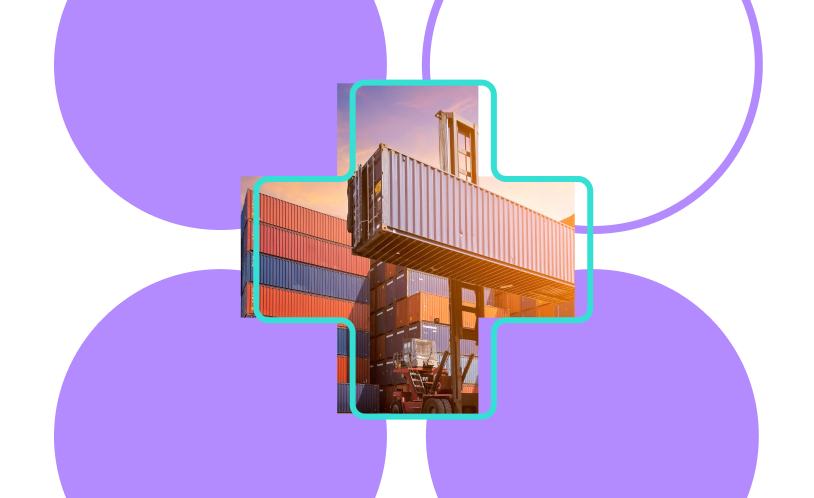If you are into the business of shipping goods all over the United States by truck, cost, on-time delivery, and the security of your shipment are the three factors that will likely keep you up at night. And while there are various approaches to shipping goods and calculating the cost and all other logistics associated with truck freighting, your carrier selection will most likely be the most important decision you will make.
In 2018, US trucks traveled nearly 185 billion miles. From clothes to food, electronics to pharmaceuticals, it’s kinda a big deal. However, to properly understand how important trucking is to business today, it is important to take a few steps back to observe where it is coming from.
During the 1930s, business owners had just started to convey their goods by truck. Around then, vehicles were getting mainstream, and, as a result, the roads were being cleared over and improved. However, it was not until the Interstate Highway System which came about in the mid-twentieth century that the trucking business encountered huge development.
Flas forward and today, trucks remain a fundamental part of freight distribution in the United States, responsible for an enormous level of the business shipping action that happens daily in the United States.
LTL vs FTL
The importance of Trucking Concepts
Freight trucking is complicated but it’s not rocket science. Size does matter, so make sure you know your freight measurements (for example, length, width, and height). You’ll also need to know your freight classification and type of shipment, whether it’s a full truckload or less than truckload.
What Is LTL Freight
LTL simply means less than truckload, while FTL is short for full truckload freight. LTL refers to when multiple shippers’ freight moves simultaneously on a shared trailer instead of having your freight solely on an individual trailer (think an Uber Carpool). This is ideal for shipments in the range of one and six pallets or viably any shipment under 12 linear feet since it makes the most out of the accessible shipping space. In circumstances like these, shipments that are more than six pallets can normally still qualify for things like volume LTL or a partial truckload shipment.
What Is FTL Freight
FTL is usually utilized for shipments requiring a full truckload, such as a Class 8 tractor with a refrigerated trailer or a dry van. With FTL, your freight is the only freight being moved on a truck, so you have exclusivity to the truck and hypothetically are filling the truckload. Regardless of whether you fill it or not, you have right to the truck’s full limit. Using FTL gives you exclusivity, and you won’t need to stress over your goods changing hands or your goods being mixed with different products.
Similarities Between LTL and FTL
There are numerous similarities among LTL and FTL. Both typically use use Class 8 semi-trucks, which require an expert driver who has a business driver’s permit, and focus on palletized freight. They also have similar trailer sizes (53 feet long, 102 inches wide, and with swing entryways).
What Is The Difference Between LTL & FTL Freight
The most significant difference between LTL and FTL is that LTL is more cost-effective, especially if you’re transporting a few pallets. You end up paying for the space you use instead of monopolizing an empty truck. In a bid to keep up productivity, LTL carriers have to occupy underutilized space with as many shipments as possible.
FTL drivers mostly work with extremely firm time arrangement. However, drivers dealing with LTL shipments need to visit numerous locations for delivery and pick-up during each run.
So while you’re saving on price, you might pay on on-time delivery.
If you have a full truckload, your driver will get whatever you are shipping and drive it directly to the collector, so transportation is straightforward and predictable. If the driver doesn’t experience any issues during the drive, your goods will be delivered based on the predicted timetable and the appropriate mileage. What is the LTL transit method? LTL transit is fundamentally different, as they have to pass through several courses due to all the different stops they need to make, so the conveyance dates they give you are not an assurance.
Another vital difference is that with a full truckload, the shipper will load your product into the truck, seal the trailer, and take it directly to its destination. With an LTL shipment, your product will normally be loaded and unloaded at various distribution centers a few times before at long last arriving at its destination. So, while more often than not, shipments are conveyed in ideal conditions, there is an increased probability of unwanted exposure for your goods. Ultimately, this means a higher chance that your goods can get damaged. Which is why, of course, we always recommend securing insurance on your goods.
Conclusion
While one shipping strategy isn’t necessarily better than the other, it’s safe to say that there are many circumstances where shippers can profit by utilizing LTL and FTL. If you have a little shipment that is that you could go with adaptable shipping and delivery dates, utilizing LTL may be your best choice. In comparison, LTL will save you more money than when you need to ship a more delicate product on a fixed delivery timeframe, which is best achieved using the FTL method.
To read more about the freight trucking industry, check out our other blogs, including ‘How To Calculate & Understand Freight Trucking Rates’, ‘Our Guide To Partial Truckload Shipping’, & more here!



